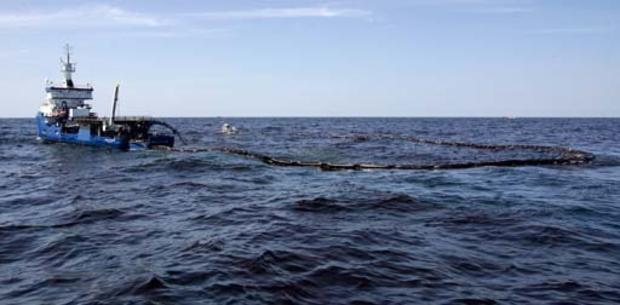Virtual Reality Deployed to Deal with Oil Spill's Ugly Reality
With cleanup operations struggling to contain the oil slick in the Gulf of Mexico, critics have taken aim at BP and the U.S. Coast Guard for not being able to contain the spread with state-of-the art technologies. (One decidedly low-tech idea was to burn about 1000 barrels of oil on the water's surface.)
A recent piece argued that oil cleanup technology has failed to advance much beyond what was available when a Union Oil well blew out a few miles off the coast of Santa Barbara, Calif. As our sister site CNET News.com recently noted, oil spill cleanups historically have been relatively low-tech affairs.
At the same time, though, emergency teams now have certain new high-tech tracking tools they didn't have at their disposal in the past. As the current moves, so does the oil slick and predicting its proper direction is going to determine the response options. That's where computer-generated models worked up by the National Oceanic and Atmospheric Administration (NOAA) are playing a role. Live Science's Tech News Daily has a good write-up of the challenge facing NOAA:
Just knowing where the oil will come up isn't enough. NOAA scientists are using ocean currents and wind direction to model the movement of the growing slick at the surface and plan containment efforts.Also Read:NOAA uses its own models as well as simulations from the Naval Oceanographic Office and Texas A&M University, said Doug Helton, coordinator of incident operations for NOAA. The information is updated daily and available on the NOAA Web site.
"We have pretty good confidence in the 72 hour timeframe," Helton said. "Once you get past that, you start using more statistical probability-type models."
Forecasting this spill is particularly challenging, Helton said, because less is known about deep water spills compared to tanker spills at the surface, which are more common. Tanker spills also involve a known amount of oil, while no one knows how much oil the Deepwater Horizon spill will put out.
"This release could go on for 60 to 90 days or more," Helton said. "There's a lot of things that could go on in that time period that would greatly impact our model, like the fact that hurricane season is starting in a month."
Special Section: Gulf Coast Oil Disaster
BP CEO: Oil Leak Containment Dome Ready for Use
Higher Gas, Seafood Prices Likely from Spill
Jeff Corwin: Oil Spill Means Eco-Chaos
How Much Will BP Have to Pay
Oil Still Gushing into Gulf
Oil Spill by the Numbers
Gulf Oil Spill Containment Efforts
